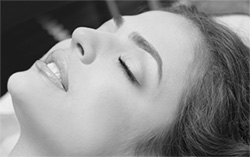
A trip to the dentist can be a nail-biting experience for many people. Indeed, a number of people are so scared of going to the dentist that they put off having treatment until they can no longer tolerate the pain. At City Dental in Leeds, we recognise that having dental treatment can be a daunting prospect and will do everything we can to help clients feel as comfortable and relaxed as possible. We have treated many nervous patients and will always be on hand to answer questions and address any concerns or queries.
We offer sedation services to help nervous patients feel relaxed and calm before and during dental procedures. Sedation does not put you to sleep but it will induce a completely relaxed state. You will be conscious throughout the procedure and aware of your surroundings, but you will not experience any pain or discomfort. Sedatives enter the bloodstream and cause the body to become relaxed and calm.
Sedatives remove the stress and trauma of having dental treatment for people who feel anxious or nervous about seeing a dentist. Unlike general anaesthetic, sedatives do not make you unconscious but simply bring about a relaxed state, so rest assured you will feel completely calm during the procedure. Sedation dentistry is very safe when carried out by trained professionals, as there are at our practice in Leeds, and does not carry the risks associated with general anaesthetic. Sedation is not painful and you should not experience any side-effects, apart from feeling slightly drowsy for a short period of time after the procedure.
There are different sedation methods, including oral sedation, inhalation sedation and intravenous sedation. Oral sedation involves taking a tablet, inhalation involves breathing in sedative gas and intravenous sedation is administered via an injection. Oral and inhalation sedation methods can be used for patients with a phobia of needles, for which a prescribed sedative medication may be taken the night before or on the morning of the procedure. We are happy to discuss your sedation needs and preferences and will explain how the different methods work. Once you have been sedated your heart rate, oxygen levels and pulse will be monitored closely.
After the procedure, you will be monitored for a short period of time while you come around, after which you will then be able to go home. You may feel drowsy after being sedated so it is advisable to arrange for somebody to give you a lift home and it is not advisable to drive. The after-effects of the sedative should wear off shortly and you will be able to return to your normal routine the next day.